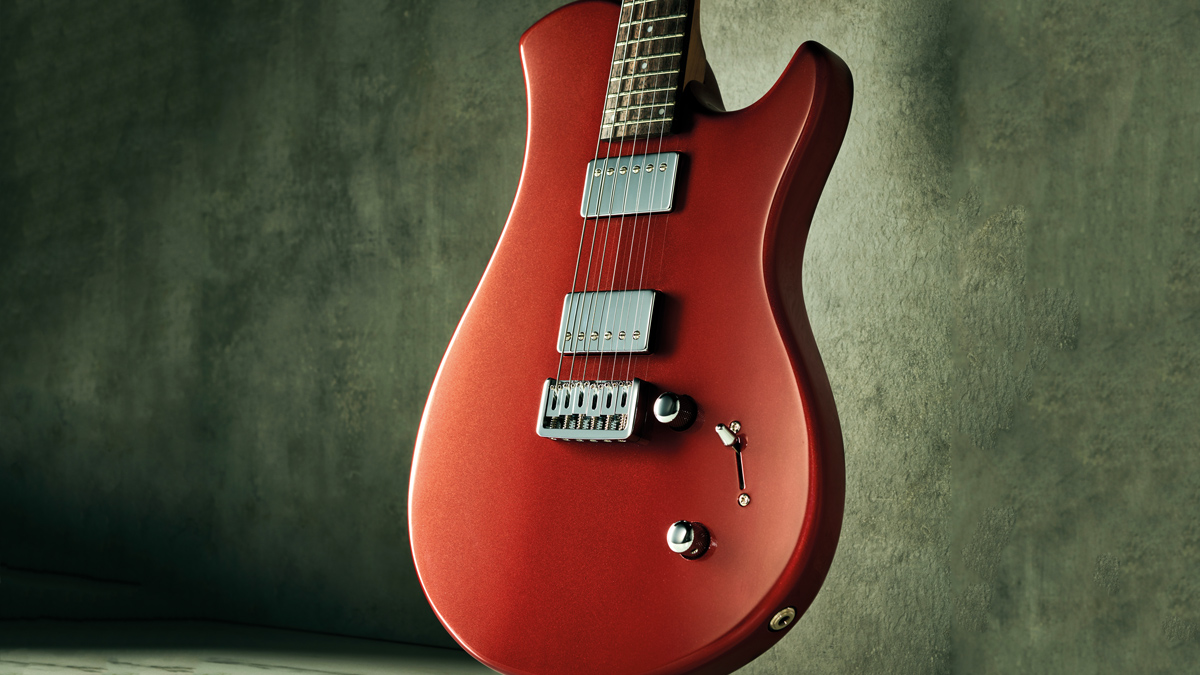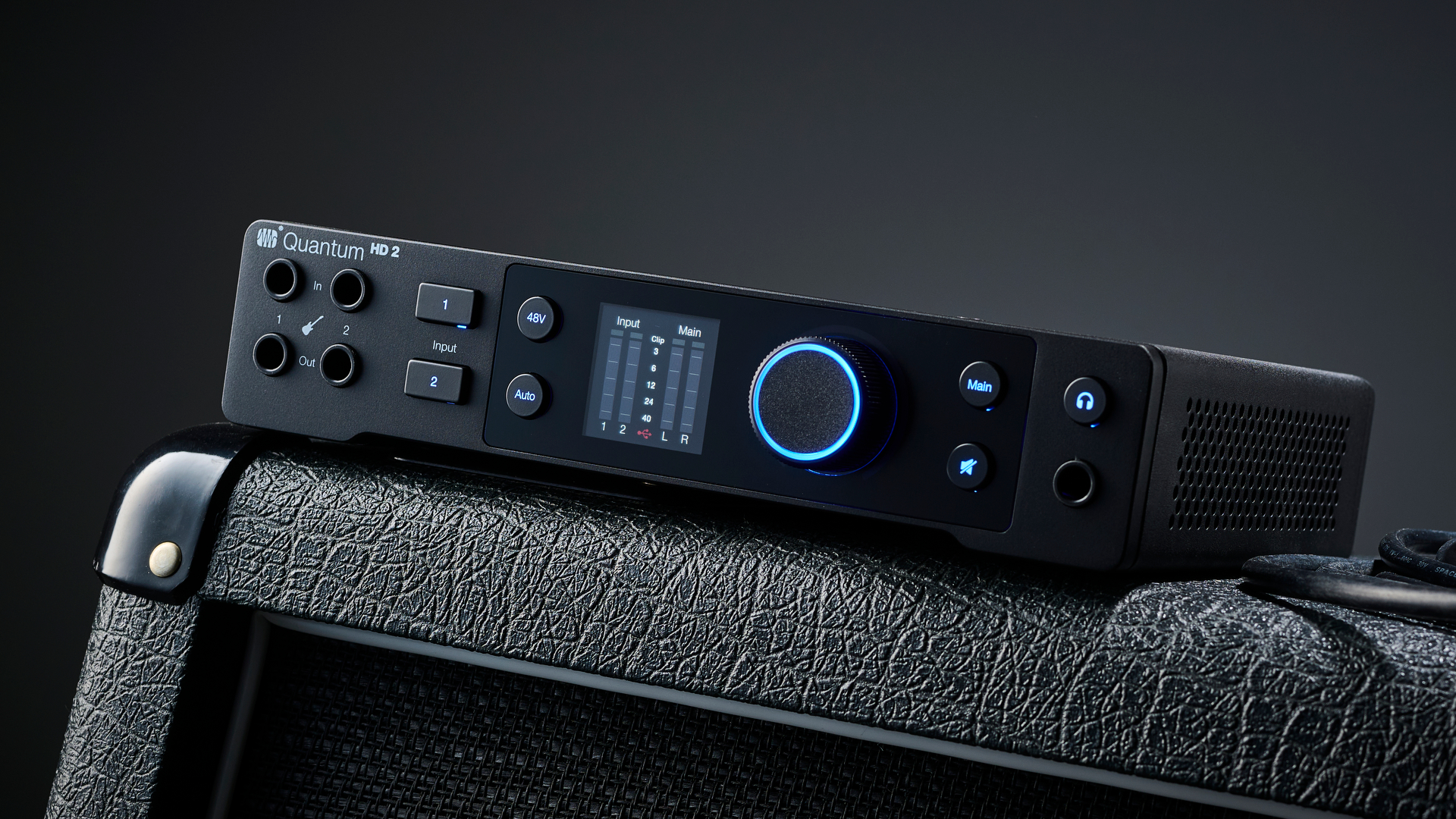Guitar World Verdict
While the initial price might be expensive, the pickup swapping feature is a potentially transformative design feature that will change how we look at the electric guitar. It is a lot of fun.
Pros
- +
Perfectly competent build.
- +
Streamlined modern design.
- +
Very good player.
- +
The unique instant pickup swapping is the real attraction.
Cons
- -
For its origin and style it’s a little expensive.
- -
Buying additional pickups involves quite an outlay.
You can trust Guitar World
With their complex and hi-tech hollow construction, Relish’s Swiss-made guitars take a very fresh look at the electric instrument. They’re also made in small numbers and cost a pretty penny.
Until now. In comparison with the Swiss-made instruments, Trinity by Relish is made in Indonesia and is a simplified, more conventional instrument that retains the pull-out/push-in pickup swapping system that we first encountered on the Eucalypt Mary back in issue 448 and that is now a part of all Relish designs.
The body outline here apes the Swiss-made Jane and Mary models but is simply made from basswood in a choice of three gloss metallic finishes. It’s a 24-fret design, too, with a long Fender scale, a hardtail through-body strung Strat-style bridge, and a simple master volume and tone setup with a three-position lever pickup selector. All good.
Many of us will have experienced guitars made by Cor-Tek, either under its own Cort name or one of the numerous brands the massive operation produces, including PRS SE and Ibanez. A factory can only make to a design and here Trinity keeps things focused and very player-centric.
The satin-finished neck is made from rift-sawn stock, the head spliced very cleanly (even though the pieces aren’t matched that well) under the 2nd fret. The fingerboard radius is quoted as 254mm (10 inches), like PRS guitars.
It’s rounder than the flatter ’boards we see on more modern designs, and the fret gauge combines girth with a good height.
The Swiss-made guitars use a woven bamboo for their fingerboards, with stainless steel frets. Here, the stainless steel frets are retained but we have a laurel ’board, a less deep-brown rosewood alternative. There’s no bling to be found, just simple small dot markers on the face, small side dot position markers and a simple metallic headstock logo.
An unplugged strum reveals a smooth ringing response and the playing feel is extremely engaging
The headstock itself is quite compact and the back angle ensures a good string break over the well-cut graphite nut.
The combination of that sweeping curved line from the upper shoulder into the treble cutaway, and a nice bit of neck shaping as it moves into the body, means access is extremely easy right up to the top 24th fret. It uses three screws in inset washers to hold the neck to the body, and not only does the joint feel very rigid, it’s very tight and well-fitting, too.
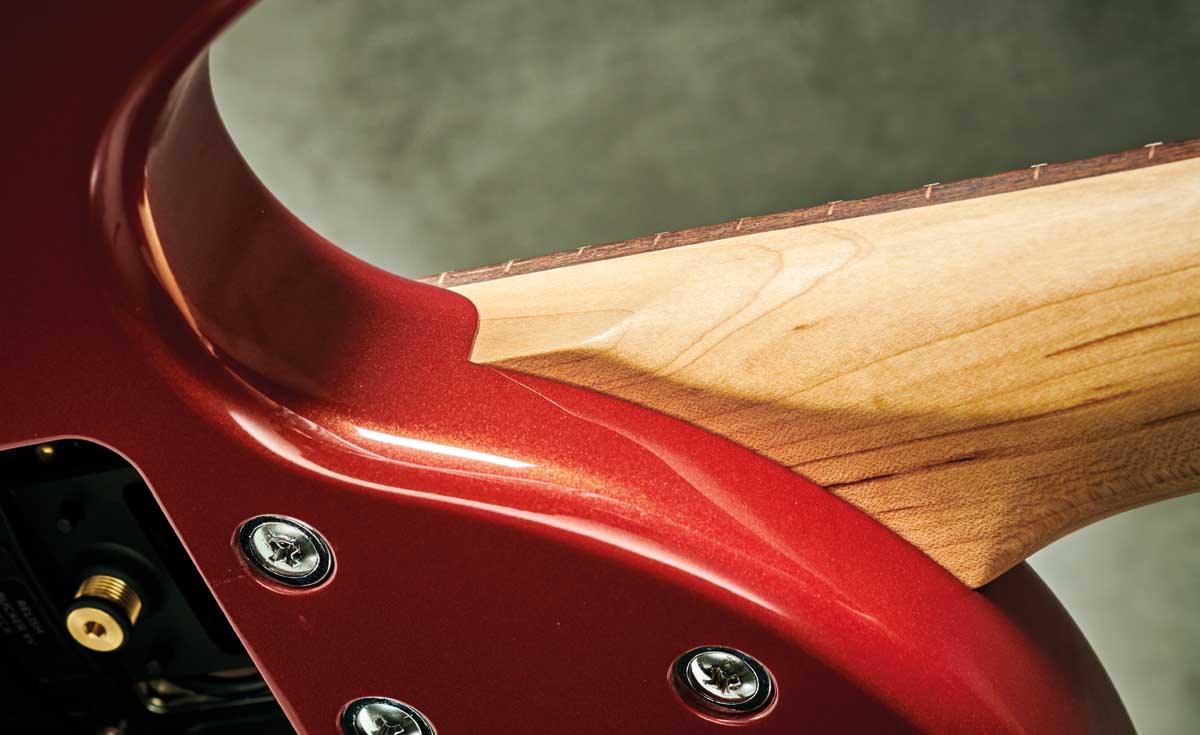
Overall, the guitar is lightweight. The body’s top is arched from bass to treble-side with a heavy edge radius and slight ribcage contour on the otherwise flat back. It’s technically an offset, too, thanks to its waist, and all in all makes for a very comfortable guitar seated or standing.
As you can see there’s no scratchplate; the controls are rear mounted and the knobs are set into the top. It references the original solidbody with its rear ferrules and through-body stringing, although the walled hardtail Strat-style bridge is a little more modern.
There’s no intonation compromise: the six saddles fix that and it feels very smooth under your right hand palm, even though those pesky height adjustment screws slightly protrude above the top surface of the saddles. But flip the guitar over and you see two open holes where you can access the unique pickup swapping element.
Instantly revoicing this guitar with different pickups is a lot cheaper than buying another guitar or two
A swift pull on that central brass threaded bolt removes the pickup. Select another pickup and push it in – it’s held in place via four small magnets at the corners of the rigid injection-moulded plastic frame that attaches to the pickup via the standard four screws that hold the twin coils in place.
Mounted in the guitar is another frame with matching magnets and four small contacts that connect to the pickup as it’s loaded in.
Trinity is supposed to ship with a set of Relish’s XX humbuckers and, on the first batch of 500 instruments, a set of Relish’s humbucking-sized P-90s as well. However, our test guitar came with a set of Relish’s XV ’buckers and a set of its Single Coils – which we understand are made by PSE Pickups, like many pickups used on CorTek’s Indonesian builds.
We also received a set of our old friends: Seymour Duncan Alnico II ’buckers. At the time of writing, along with its own-brand pickups there are various Seymour Duncan and Bare Knuckle pickups also available from Relish.
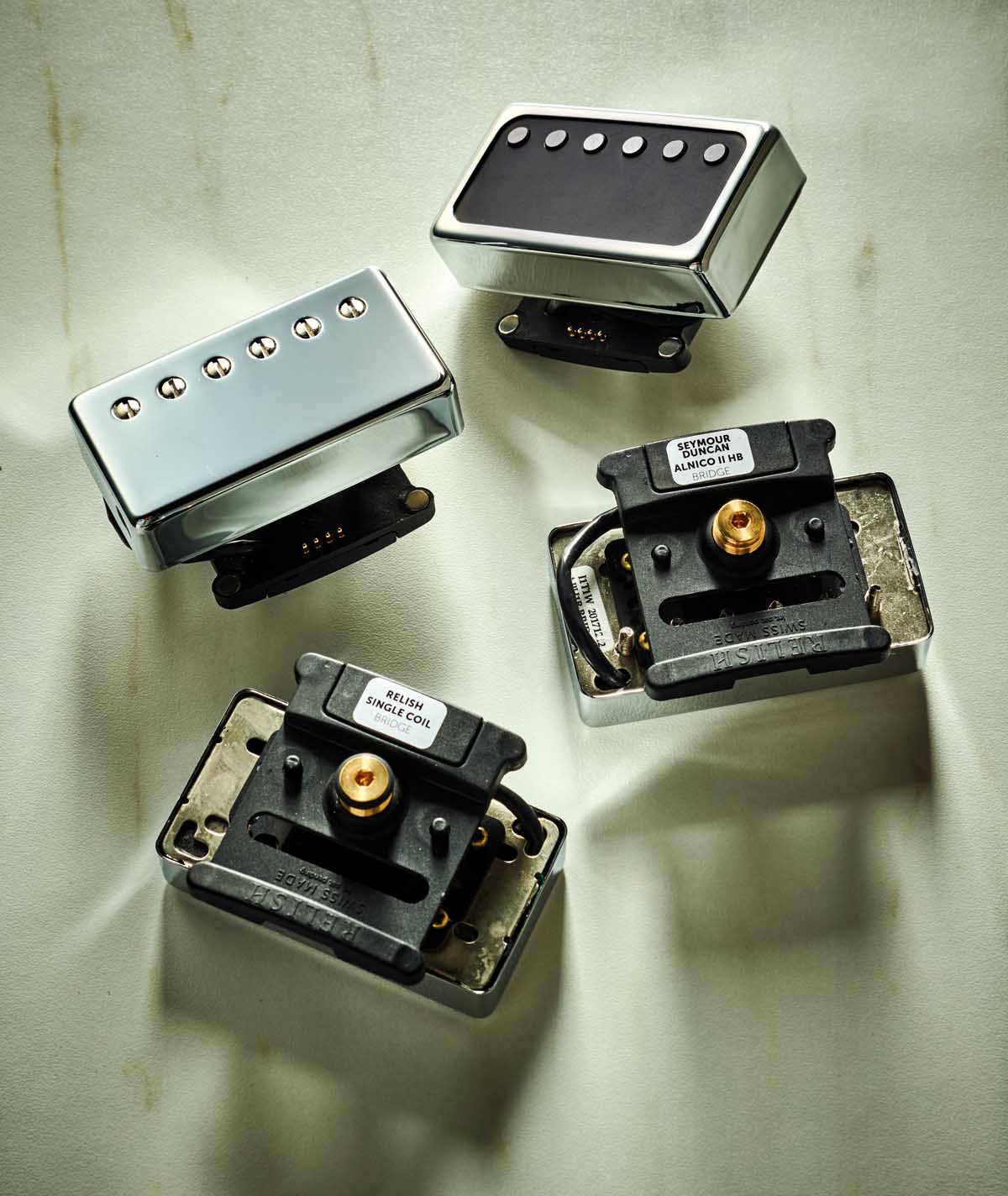
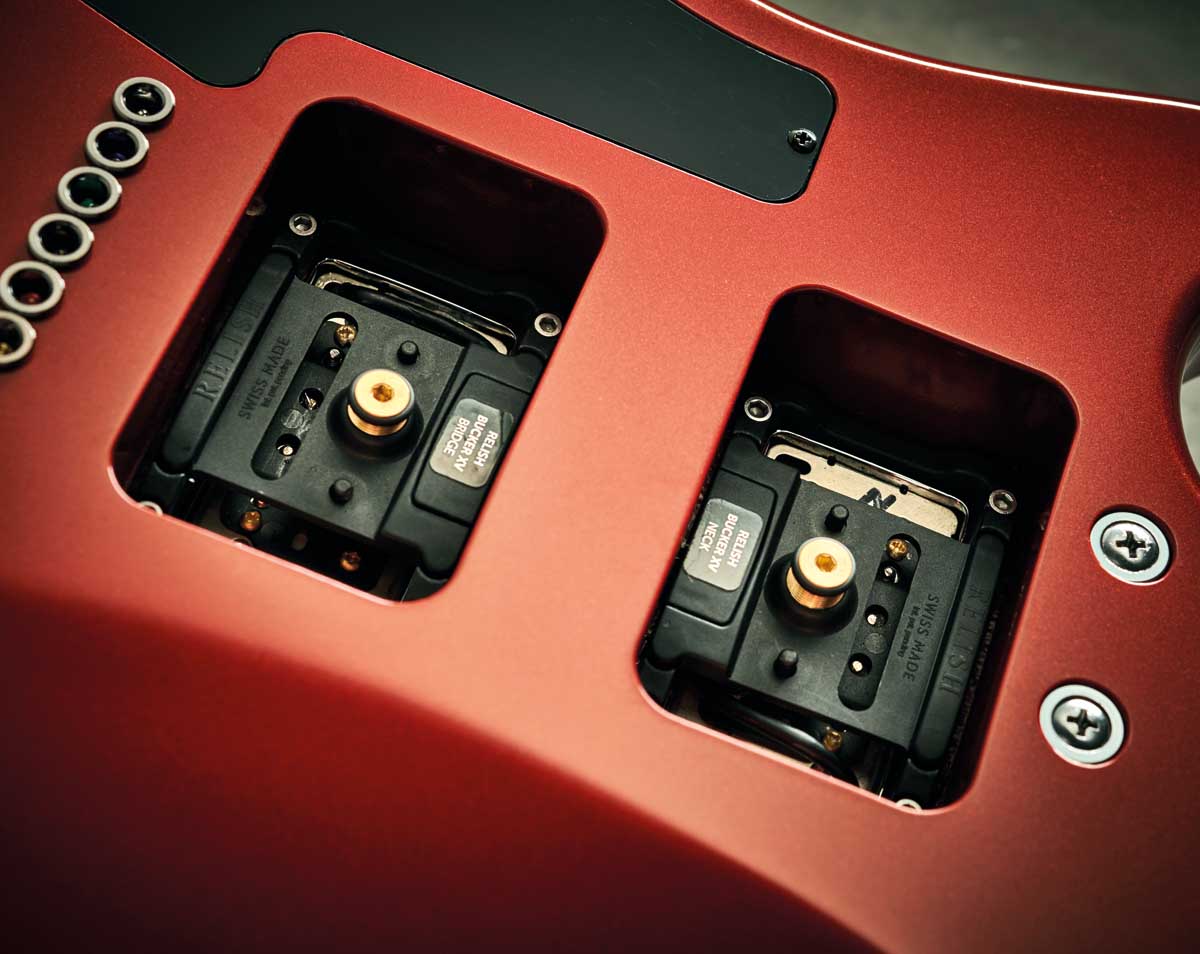
Under The Hood
The control cavity here is considerably larger than it needs to be, with an oversized coverplate to match. Inside we have a linear taper Alpha B500k volume pot and an audio taper Goldo A500k tone pot with a common .047 microfarads capacitor.
The block-style three-way lever switch is the sort you’ll find in numerous lower-end guitars, too. You’ll notice the pickup hook-up-like wire from those mounting frames – green to hot, black and bare to ground with the red and white leads.
It means that you could easily add a switch to split the humbuckers for further sounds with the same humbucking pickup set.
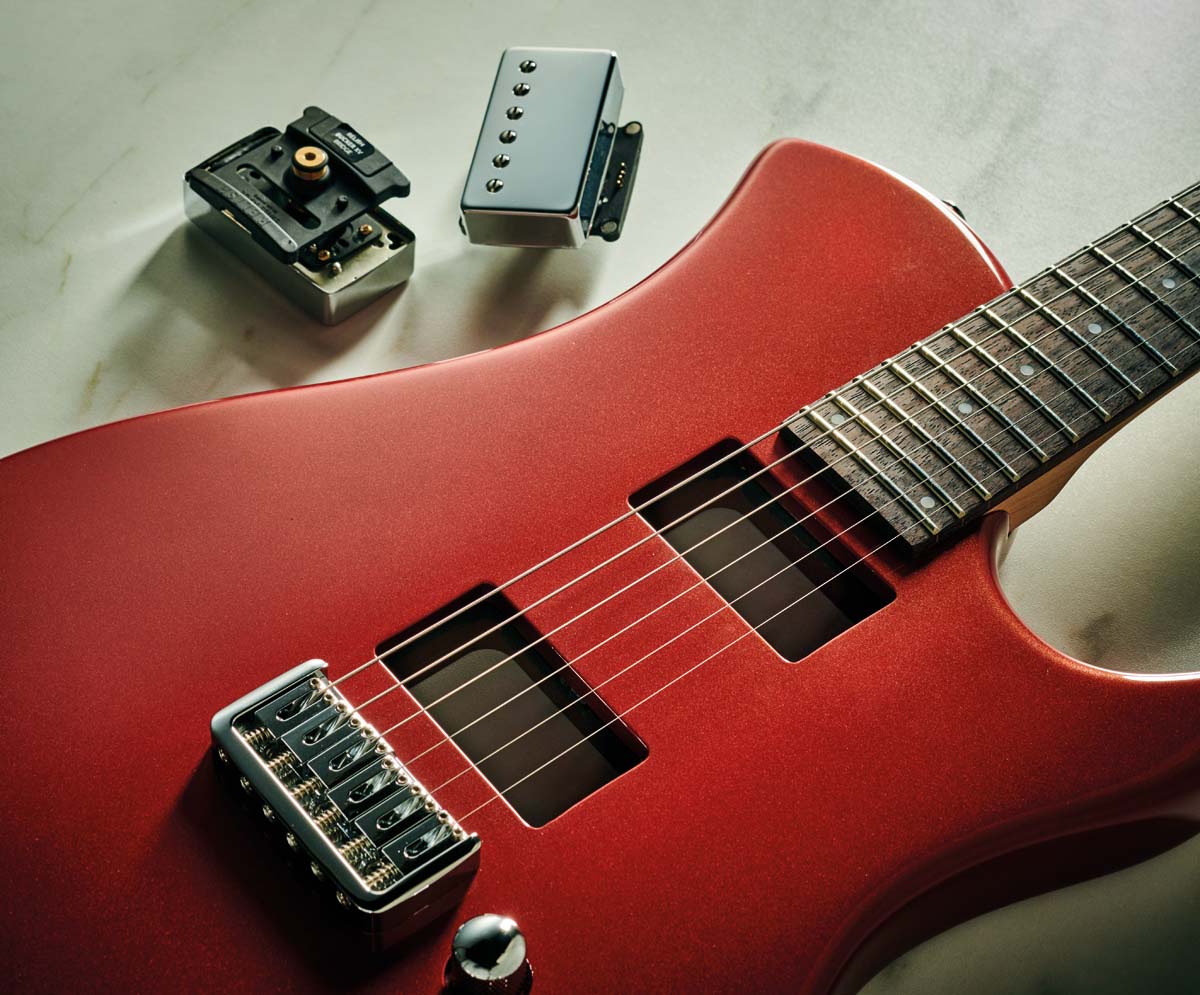
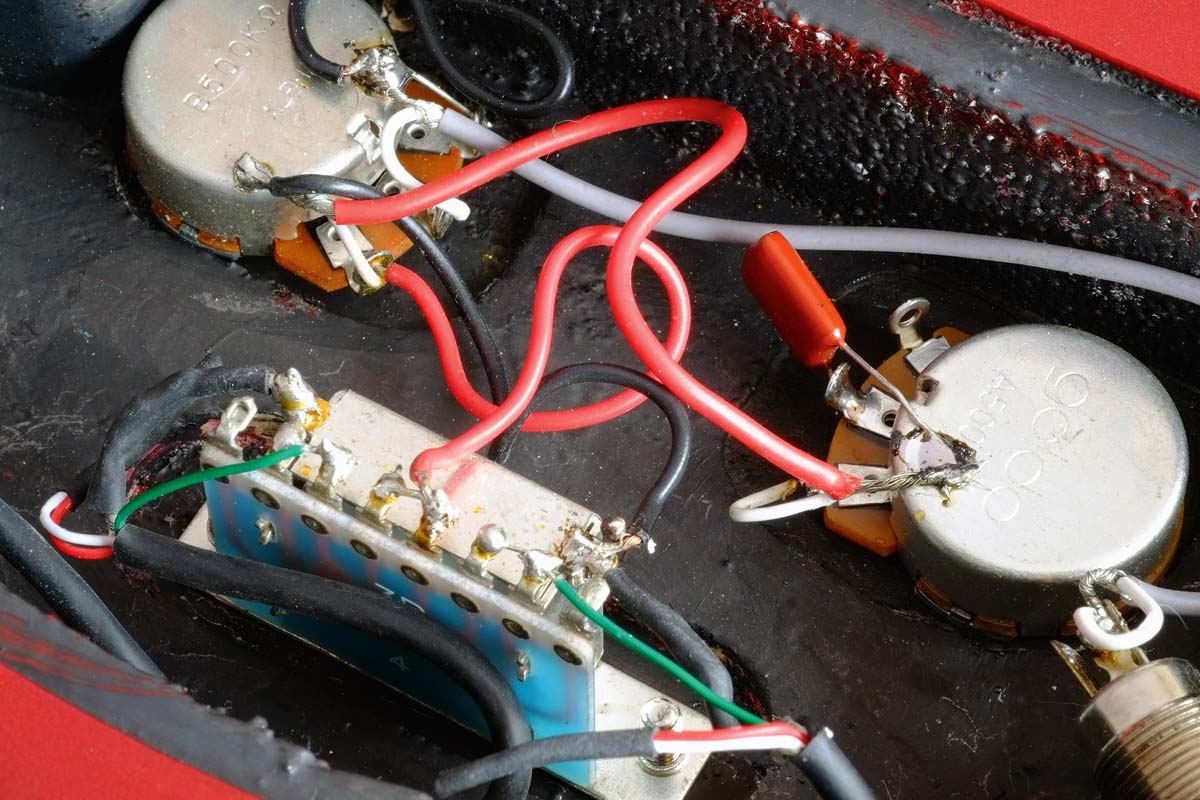
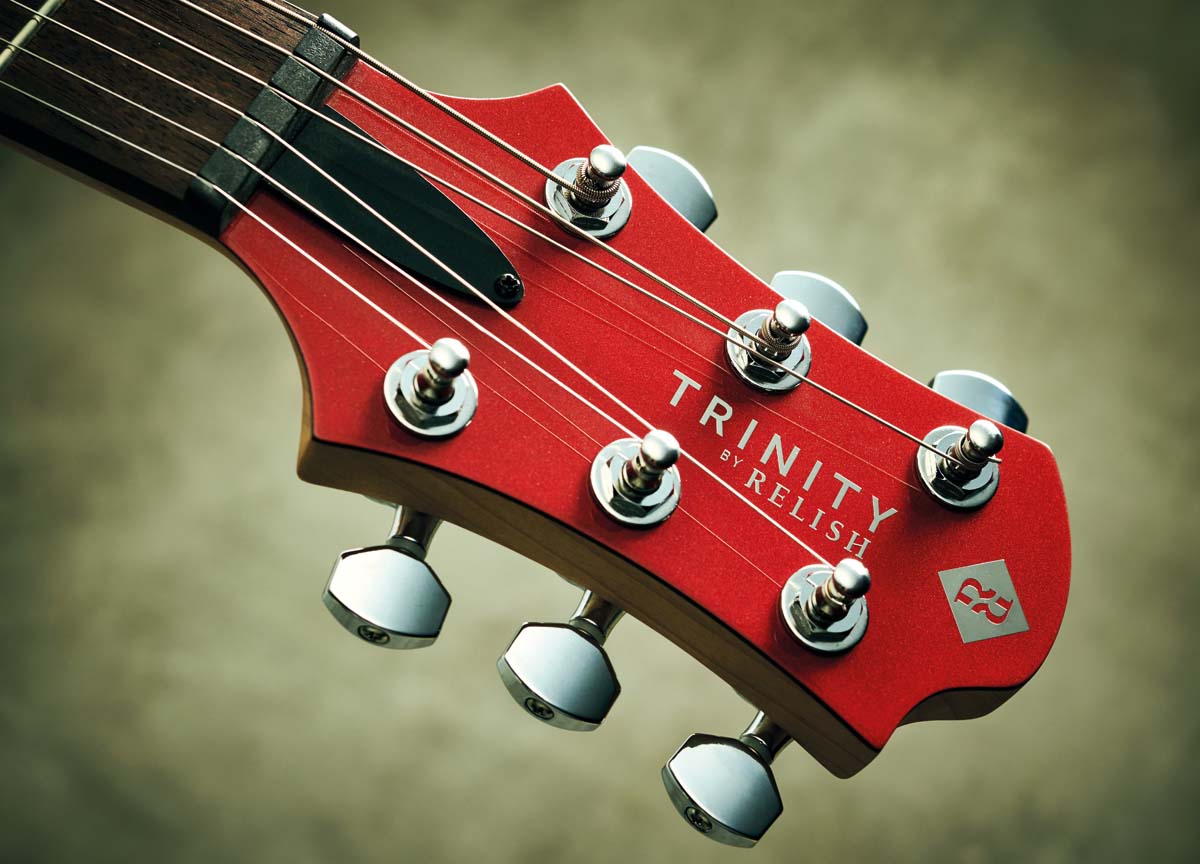
Feel & Sounds
The twin-humbucker bolt-on with a fixed bridge chassis is a bit of a rarity, stylistically, outside of progressive instruments from the likes of Ibanez or Charvel, not to mention one with 24 frets.
Still, a quick unplugged strum reveals a smooth ringing response while the neck shape and overall playing feel and setup are extremely engaging.
The neck’s ‘modern C’ profile might suggest something thinner in depth but it feels a bit fuller and at the 1st fret is similar to Fender’s American Pro, and quite a few others, at a hair over 21mm, filling out to a bigger 25.5mm by the 12th, approaching the bulk of an old-spec Tele.
Make no mistake, though, this instant pickup swapping is a lot of fun. It works effortlessly and the six pickups we’re provided with certainly illustrate the potential
Make no mistake, though, this instant pickup swapping is a lot of fun. It works effortlessly and the six pickups we’re provided with certainly illustrate the potential. The Relish XV bridge sounds on the hotter side and immediately sits well with any crunch-to-heavy gain we call up; the neck is well matched, albeit with a more vintage-y laid-back midrange.
Knocking back the volume brings down the sizzle and both controls feel nicely damped in their rotation, too. The Seymour Duncan pickups sound like the old friends that they are, not a million miles from the XV, but there’s a little more clarity and the bridge sounds more open.
This is a great ‘home’ set for anyone working in clean to classic rock and quite a lot more besides, too. The Relish Single Coil set provides a stark contrast to either humbucking set, as you’d expect, with bags of pristine clarity and fast attack.
Of course, there’s nothing stopping you from keeping the Single Coil at the bridge with either the neck humbucker for a Tele Custom kinda vibe, for example, or reverse that for more modern power at the bridge and a less direct, more delicate neck voice.
Certainly for the recording musician, this trio of a humbucker, P-90 and Single Coil would pretty much cover every base. Of course, pickups will only amplify what they hear and putting the Relish up against a variety of solidbodies it does sound a little conservative overall without the push and power of a current Les Paul Classic (with retrofitted Burstbucker 1 and 2s) or the percussive woodiness of a good Strat.
There’s less here, then, for those of us who embrace those distinct characters. But begin working with more expansive amp tones and effects and you can get rather lost – in a good way.
Doubling parts on a recording with the subtly different pickup voices proves not only fast and easy but no slower than pulling gains down or up within a patch on our Helix. Once we get back to gigging, swapping out pickup sets between sets – or even numbers – might sound a little bonkers but is perfectly possible.
Verdict
A prohibitive factor with Relish’s Swiss-made guitars is the high price. You can argue that with all their innovative aspects, those models are actually cheap, but upwards of €4,868 is always going to be way too much for most of us.
While Trinity by Relish slashes those lofty prices, it is a much simpler guitar and still relatively expensive compared with many Cor-Tek-made Indonesian instruments. And to maximise its major pickup swapping feature you’ll probably want to buy more sets (see spec, right), which becomes quite expensive with the added bracket needed for the pickup base.
It can easily become two, three or more guitars in one and there’s nothing wrong with the pickup swapping concept nor the execution
But if you get on with the guitar and like its style then instantly revoicing it with a different pickup set is a lot cheaper than buying another guitar or two that you’d have to lug to your gig, restring and maintain. With this concept you simply swap the pickups, instantly.
Yes, that initial price may still look on the expensive side – and drops it right into Fender’s Performer and American Professional price points, not to mention Gibson’s start-up USA production models and PRS’s S2 range – but it can easily become two, three or more guitars in one and there’s nothing wrong with the pickup swapping concept nor the execution.
The guitar itself is a very nicely made tool that might well be all you need, with some additional pickups, to fulfil all your gigging, recording and practice needs. One to watch.
Specifications
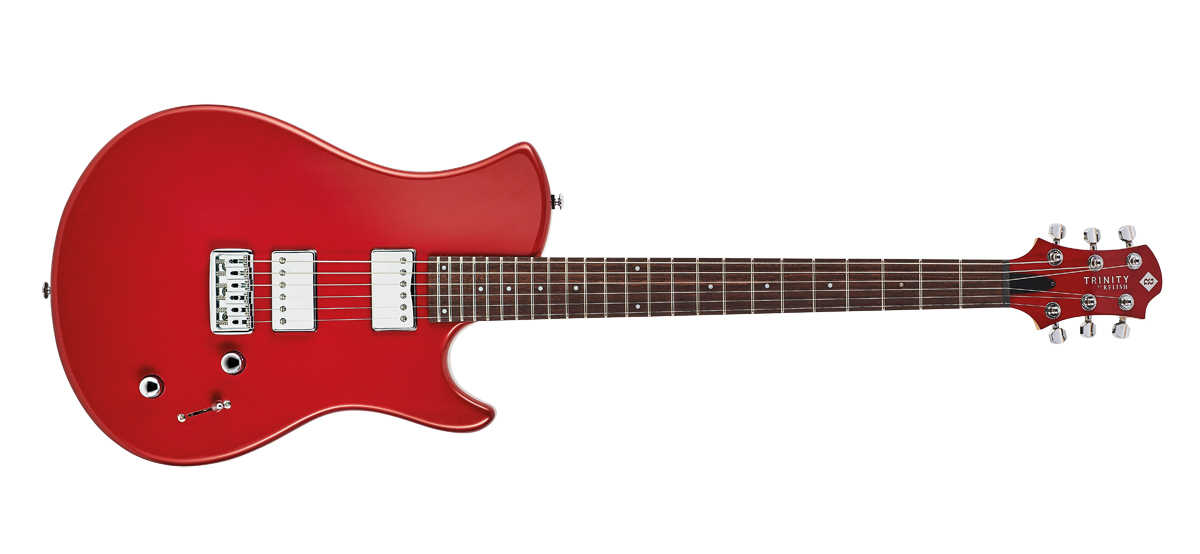
- PRICE: €1,614 (inc gigbag)
- ORIGIN: Indonesia
- TYPE: Single-cutaway solidbody electric
- BODY: Basswood
- NECK: Maple bolt-on, modern ‘C’ shape
- SCALE LENGTH: 650mm (25.59”)
- NUT/WIDTH: Graphite/41.8mm
- FINGERBOARD: Laurel, pearloid dot markers, 254mm (10”) radius
- FRETS: 24, medium jumbo stainless steel
- HARDWARE: Hard-tail six-saddle bridge w/through-body stringing, enclosed tuners – chrome-plated
- STRING SPACING, BRIDGE: 52mm
- ELECTRICS: 2x Relish XV humbuckers (as reviewed), 3-way lever pickup selector, master volume and tone. Additional pickup sets tested: Relish Single Coil, Seymour Duncan Alnico II HB Pro
- WEIGHT (kg/lb): 3.0/6.6
- OPTIONS: Various pickup sets from Relish, Bare Knuckle and Seymour Duncan are available from €299. NB: “The pre-order Trinity comes with a standard set of swappable Relish XX pickups, a well-balanced and punchy humbucker duo,” says Relish. “Also included is a duo of Relish P-90 single-coil pickups that will be shipped along with the guitar”
- RANGE OPTIONS: The Swiss-made models also feature the pickup-swap concept: Jane (€6,349), Mary (€5,512) and Mary One (€4,868). Custom one-off Platinum instruments also available (POA)
- LEFT-HANDERS: No
- FINISHES: Metallic red (as reviewed), blue, black. High-gloss body, natural satin neck
- CONTACT: Relish Guitars

Dave Burrluck is one of the world’s most experienced guitar journalists, who started writing back in the '80s for International Musician and Recording World, co-founded The Guitar Magazine and has been the Gear Reviews Editor of Guitarist magazine for the past two decades. Along the way, Dave has been the sole author of The PRS Guitar Book and The Player's Guide to Guitar Maintenance as well as contributing to numerous other books on the electric guitar. Dave is an active gigging and recording musician and still finds time to make, repair and mod guitars, not least for Guitarist’s The Mod Squad.
“What blew me away was that everyone wanted the curly maple top. People were calling, saying, ‘I’ve got to have the bird inlays’”: Paul Reed Smith on raising the Standard 24, finally cracking the noise-free guitar and why John Sykes is a tone hero
“It combines unique aesthetics with modern playability and impressive tone, creating a Firebird unlike any I’ve had the pleasure of playing before”: Gibson Firebird Platypus review
